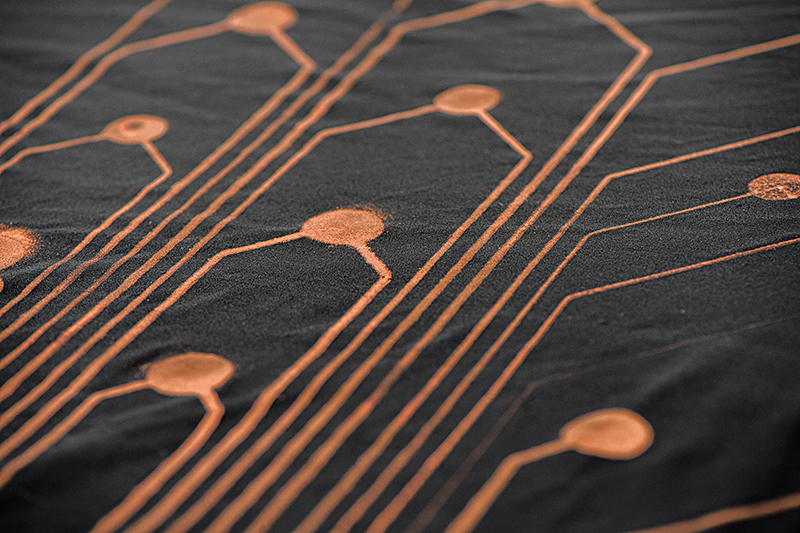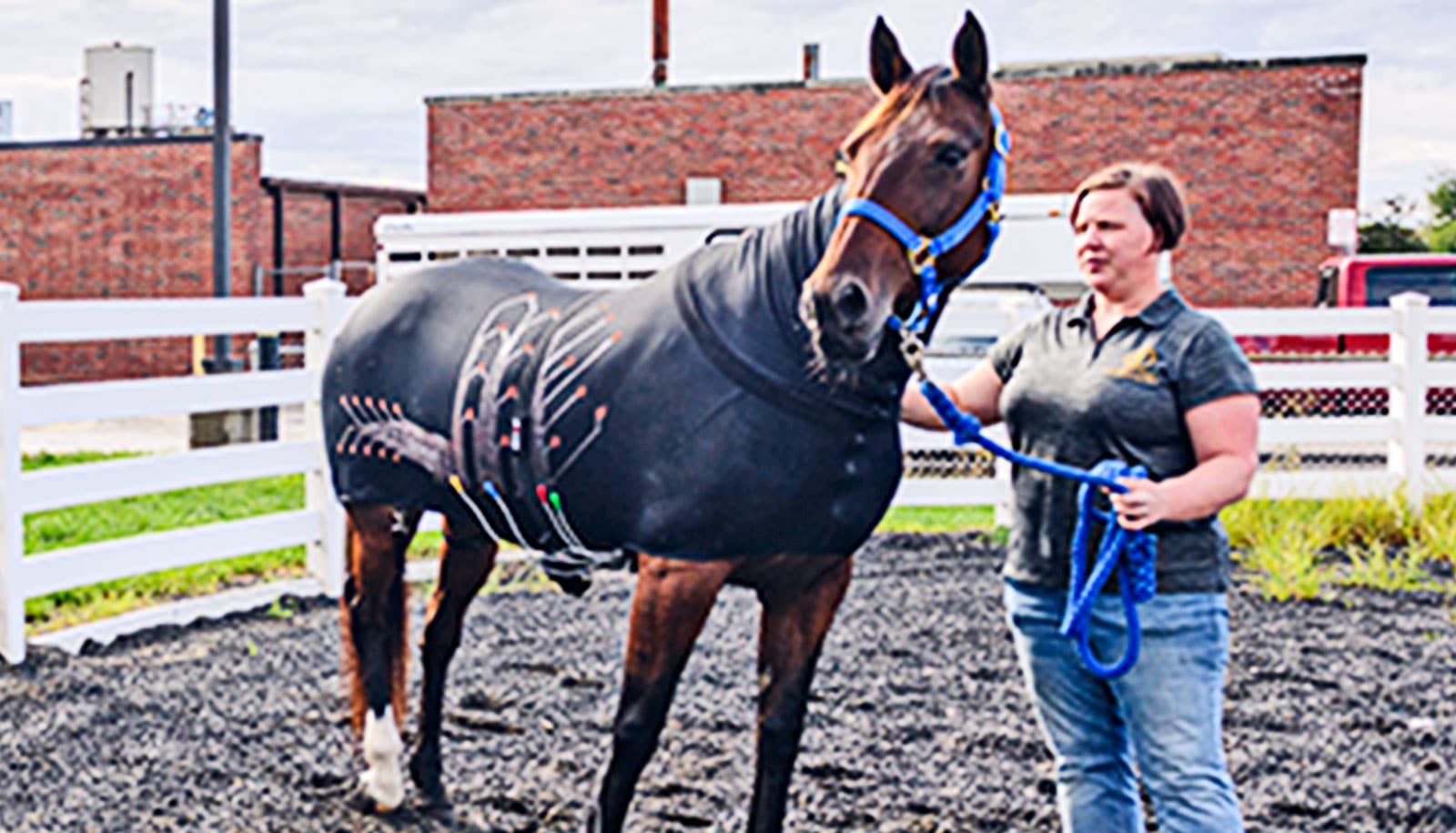A first-of-its-kind horse slicker with a specially designed liner could be able to tell the horse’s human caregivers of increasing chronic diseases.
A new study explores how to convert off-the-shelf horse slickers into e-textiles that continuously monitor equine cardiac, respiratory, and muscular systems for several hours under ambulatory conditions.
The study appears in Advanced Materials.

To add the e-textile capabilities to the slicker, the researchers developed a dual regime spray and technique to directly embed a pre-programmed pattern of functional nanomaterials into the slicker’s fabrics. To enable remote monitoring, the e-textile was connected to a separate portable unit that shared vital signs to a laptop via Bluetooth.
Using the e-textile means that veterinarians and their support staff won’t have to shave the horse’s hair or use messy adhesives to place the electrode on the horse’s skin, which makes it more comfortable for the horse.
Chi Hwan Lee, an associate professor in the Weldon School of Biomedical Engineering at Purdue University, says continual monitoring through the e-textile patterns can be useful for long-term management of chronic health conditions in large animals and eventually humans.
According to Lee, adding e-textile properties to existing garments helps scientists, researchers, and clinicians take advantage of garments’ already-existing ergonomic designs to secure a commercial grade of wearability, comfortability, air permeability, and machine washability.
“These specially designed e-textiles can comfortably fit to the body of humans or large animals under ambulatory conditions to collect bio-signals from the skin such as heart activity from the chest, muscle activity from the limbs, respiration rate from the abdomen, or other vital signs in an extremely slight manner,” Lee says. “Our technology will significantly extend the utility of e-textiles into many applications in clinical settings.”
The team’s next steps involve developing continuous 24-hour monitoring of horses with chronic disease or those receiving care in a veterinary ICU.
“We believe that our technology will be helpful in diagnosis or management of chronic diseases,” Lee says, especially as demand increases for remote health monitoring.
“Remote health monitoring under ambulatory conditions would be useful for farm and household animals, as it could potentially minimize clinic visits, especially in rural areas. It would also increase the efficiency in managing a large number of farm/household animals at once from a distance, even overnight,” Lee says.
A real-life example would be the ability to monitor severe equine asthma, which affects 14% of adult horses.
“Continuous monitoring would allow early detection of disease flair-up before it gets serious, offering an opportunity to nip it in the bud,” says Laurent Couëtil, a professor of large animal internal medicine in the College of Veterinary Medicine and collaborator of the study. “Remote monitoring opens the possibility of sending vital information to the veterinarian to help make timely and informed treatment decisions.”
This work is part of Lee’s focus in developing platform technologies using sticktronics, which are sticker-like items that contain electronics or smart technology. Sticktronics offer the ability to physically separate supporting substrates in existing electronic items and turn an item into a sticker that can be more flexible or transparent, especially on curved displays and biomedical sensors. Lee also specializes in custom-printed soft medical sensors and conformable sensor arrays, all of which can transform telemedicine and on-demand drug delivery systems.
The Purdue Research Foundation Office of Technology Commercialization has filed a patent for the technology. Funding came from the National Institutes of Health National Institute of Biomedical Imaging and Bioengineering; the National Science Foundation Civil, Mechanical and Manufacturing Innovation; and the SMART Films Consortium in Purdue’s Birck Nanotechnology Center, located in Discovery Park.
Source: Purdue University


